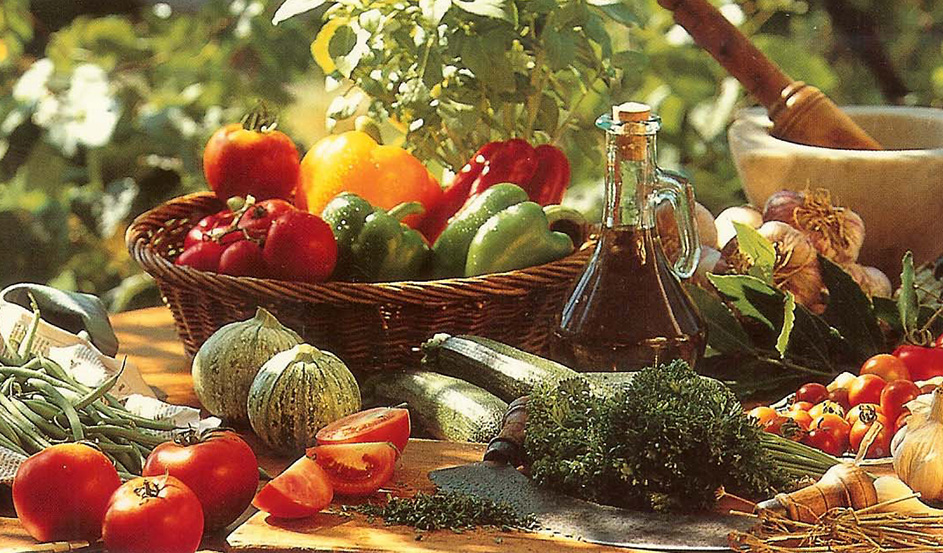
ORGANIC VS NON ORGANIC
As we look at nature; how we interact with it, relate to it and benefit from it, it is almost impossible to overlook the subject of organic vs non organic foods and the health benefits (typically; organic food is believed to have greater nutritional content). The more you read into this topic the less clear the answer seems to be, this is mostly due to the fact that when reading the findings of different studies you have to bare in mind; 1) who funded the research/study (are they pro-organic/non-organic?), 2) how the results of the study are being reported (and skewed), 3) what do the findings actually mean for your every day consumer? (organic foods are generally more expensive – organic items can cost between 10% and 100% more than food grown under conventional conditions, also labeling can be confusing with terms like ‘natural’, ‘free-range’ and ‘organic’ all having significantly different and in some cases ambiguous definitions.)
One of the big issues that has made headlines repeatedly over the last couple of decades is the treatment of chickens. Every so often we will hear reports of ‘battery’ chickens farms, and the unethical treatment of chickens, who’s meat is pumped with water then sold cheap to big supermarket chains. ‘Organic’ chickens would seem like the only way to get a decent edible chicken (without cringing when thinking about where it came from).
What do free range and organic certifications for chicken mean?
Free Range: In free-range systems, the birds are housed as described in the barn system above. In addition birds must have continuous daytime access to open runs which are mainly covered with vegetation and with a maximum stocking density of 2,500 birds per hectare. In all systems the birds must be inspected at least once a day. At the end of each laying period the respective houses are completely cleared and disinfected.
Organic: Organic systems are similar to those of free range however the guidelines for the birds and their feed are more stringent. The pullets must be raised by certified organic production methods from birth. The layers are required to have outdoor access all year round, or be fed sprouted grains for the period when indoors and all feed must be certified organic. No antibiotics or meat by-products are allowed in the feed and each bird is required to have 2 square feet of floor space. In very brief terms housing conditions for organic animals must meet the animals behavior needs as regards freedom of movement and comfort. Poultry must be reared in open-range conditions and cannot be kept in cages. Poultry must have access to open air runs whenever the weather conditions permit and wherever possible must have such access for at least one third of their life. The land that the poultry range is on must be organic. These are the very basic husbandry requirements of organic poultry in the UK.
However on the flip side you don’t have to go far before you find a whole load of controversial reporting on both methods of farming and chicken

Many organic and free-range farms are reported to cram thousands of animals together in sheds or mud-filled lots to increase profits, just as factory farms do
husbandry.
Many organic and free-range farms are reported to cram thousands of animals together in sheds or mud-filled lots to increase profits, just as factory farms do, and the animals often suffer through the same mutilations—such as debeaking (the top and bottom part of beaks are removed with a hot blade or infra-red burner – this practice is banned in Sweden, Norway, Finland and Switzerland, but is still legal in the UK), dehorning, and castration without painkillers.
It is also reported that organically raised chickens on some farms suffer from higher mortality rates than drugged chickens because extremely crowded, filthy housing conditions, coupled with a lack of antibiotics, can lead to even more parasites than are already found in drugged chickens. Despite the rule that birds must have continuous daytime access to open runs and that the farmer must have at least 10,000 square metres of space for every 2,500 hens; there are no rules to say how often the birds must visit the outside world. Add to this that hens can be fiercely territorial and will guard the exit holes. That means less dominant birds may never pluck up the courage to go outside – and could be walking around in darkness for much of their lives.
So there are both sides of the argument on chicken farming.
What are organically grown vegetables?
A study published in July 2014 by scientists at Newcastle University (U.K) in the British Journal of Nutrition, concluded that organic foods generally have more antioxidants, less cadmium, and less pesticide residue than conventionally grown products. Using data from 343 peer-reviewed papers comparing organic versus non-organic plant-based foods, researchers found that the overall nutritional benefits of organic foods generally outweigh those of their conventional counterparts. This study’s strength lies in the large number of other studies the scientists reviewed.
The team of scientists, led by Professor Carlo Leifert, concluded that there are “statistically significant, meaningful” differences, with a range of antioxidants being “substantially higher” – between 19 per cent and 69 per cent – in organic food. It is the first study to demonstrate clear and wide-ranging differences between organic and conventional fruits, vegetables and cereals. The researchers say the increased levels of antioxidants are equivalent to “one to two of the five portions of fruits and vegetables recommended to be consumed daily and would therefore be significant and meaningful in terms of human nutrition, if information linking these [compounds] to the health benefits associated with increased fruit, vegetable and whole grain consumption is confirmed”.

Organic can be grown with the use of chemicals – albeit from a list approved by various organisations across Europe and the UK
Not to put a damper on things but it was only two years prior to this that Stanford University published the results of ‘the most comprehensive study to date’ on organic and conventional foods which concluded that ‘organic foods have no more vitamins and nutrients than traditionally grown produce.’ The Stanford University team had reviewed more than 200 studies which compared either the health of those who ate organic and conventional foods, or, more commonly, nutrient and contaminant levels in the foods themselves. It included organic and non-organic fruits, vegetables, grains, meat, poultry, eggs and milk. Not only did the researchers discover organic food is not more nutritious, they also found that, although conventional foods contained more pesticides, these chemicals were well within permitted limits and not harmful in any way.
So if the leading scientists of the world can’t seem to agree on the benefits of organic produce, it seems rather difficult to expect consumers to come to a meaningful conclusion (although good marketing helps many organic food companies sway our decisions). From a consumer point of view the main thing to bare in mind is that foods certified as organic can be grown with the use of chemicals – albeit from a list approved by various organisations across Europe and the UK. The main criterion for organic pesticides is that they are naturally derived, and some naturally derived substances have been controversial. Controversial natural pesticides include rotenone, copper,nicotine sulfate, rotenone and pyrethrum.
In the UK, it is the Soil Association which determines whether food can be certified as organic. Founder and director Patrick Holden says standards may not be perfect, but organic farmers strive for the “best developed practices for the application of sustainable agriculture”. Simon Laird of Angus Organics, which supplies organic produce to a leading supermarket, says that they use a copper sulphate to combat potato blight, but only in the quantities permitted by the Soil Association.
Riverford Organic Vegetables says the letter of organic ‘law’ means avoiding pesticides and chemicals, but founder Guy Watson says that if he uses any at all, it is in the region of 1% of what growers use in conventional farming methods. Such a small percentage may reassure some, but Professor Vivian Moses of CropGen, which looks at crop production and biotechnology, disagrees. He advocates the listing of permissible chemicals and additives on packaging. “Consumers should be fully informed about what they are purchasing, especially when they are having to pay a higher price,” he says.
Having now written this article, it has become even more clear how muddy the waters are on this topic. Safe to say; as long as you are eating a well balanced diet, whether they are organic or not, you will be better off than eating heavily processed foods which loose much of their nutrients in the process and are often made using cheap quality ingredients to begin with. For more information on all the above please visit the source articles:
http://www.salon.com/2011/01/20/what_chicken_labels_really_mean/
http://www.healthline.com/health-news/organic-foods-healthier-than-nonorganic-071414
http://archive.defra.gov.uk/foodfarm/food/industry/sectors/eggspoultry/faq/marketing.htm
http://www.peta.org/issues/animals-used-for-food/free-range-organic-meat-myth/
http://www.dailymail.co.uk/news/article-2200477/If-smug-organic-mob-way-millions-families-able-afford-roast-chicken-Sunday-lunch.html

